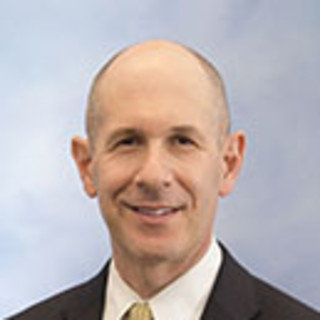I always feared the question mark. Question marks need answers, and I long feared giving an incorrect one. In the classroom, an incorrect answer could mean a failing grade. In the clinic, an incorrect diagnosis could lead to a failed treatment. Outcomes could be even worse in surgery. Failure was a frightening endpoint.
Question marks also represent an unknown, and I was never comfortable with the unknown. As clinicians, many of us are perfectionists. We do our best to know everything and be prepared for every scenario. An unanswered or unanticipated question mark could result in significant patient morbidity on any given day.
It wasn’t until midway through residency, however, that I realized the adverse effect my question mark philosophy was having. My epiphany came from an unlikely source — the television show "South Park." During the 17th episode of season two from 1998, small gnomes engage in a unique business project: collecting underpants. In their secret lair, a literal mountain of underpants, the gnomes eagerly reveal their three-phase master plan. Phase one was “collect underpants.” Phase two was “?” Phase three was “profit.” Once I stopped laughing, a light bulb went off in my head. Maybe the gnomes had a point.
I realized that almost any project could be broken down into this oversimplified three-phase template. In the past I never would have considered starting any project with a plan that had a big question mark in the middle. In medicine, the middle part of any plan needs to be extensively laid out because of the potential for patient morbidity. All questions and question marks need to be reconciled prior to making an incision or delivering treatment. But the gnomes were not scrubbing for surgery. With a different risk profile, the gnomes were undeterred by the question mark before them.
It wasn’t until several months later that I would first channel the gnomes’ energy. I told my wife I was planning to present at the spring meeting of my chief resident year, and she inquired as to what I would be researching. I did not have an answer, but I had a plan. Without hesitation I responded: “Phase one would be ‘find research topic.’ Phase two would be ‘?’ And phase three would be 'present at the combined otolaryngologic spring meetings in two years.’” The question mark would be my motivation.
Questions and question marks can instill a variety of emotions. I was trained to fear the question mark, whereas the gnomes fearlessly embraced it. A healthy dose of fear and respect for the question mark is certainly useful while treating patients, but there are consequences of carrying those concerns too far.
The gnomes’ business plan may have been flawed, but their strategy infused in me a much-needed dose of clarity and levity. Perhaps there was a benefit to oversimplification under certain circumstances. It seems silly on the surface, but this approach served to dampen my fear and anxiety. Not every endeavor in medicine warrants the same level of scrutiny and seriousness, especially when not under the glare of the OR lights.
Being perfectionists may serve us clinicians while providing clinical care, but too much analysis and focus can also be a detriment. As hard as we try, we can never really know every answer to every question mark. Answering one leads to discovery of another and can quickly morph into a form of procrastination. As the question marks propagate, fear and anxiety can compound. While there is always the risk of a negative outcome, there is also the risk of missing out on opportunities while waiting for the recipe to be perfect. No one reaches phase three if they don’t start phase one. Even with a big question mark in the middle, there can still be forward action, and the gnomes were executing.
Some question marks are big and obvious, while others may be more subtle. Advancing any plan requires not only execution of the phases, but also acknowledgement of seen and unforeseen questions in between. Even with exhaustive planning, some unknowns can only be encountered and solved by doing. While failure is never the desired outcome, trying and failing can often teach more than theoretical analysis, especially outside of direct patient care, where failure has different implications.
Besides work-life balance, we need emotional balance, and the gnomes’ question mark is a reminder of that. Outside of the hospital, a question mark does not always need to portend a worst-case scenario with the high doses of stress and apprehension that can accompany them. Instead of a barrier of fear, the question mark could be a beacon of opportunity.
Forging through question marks requires belief, trust, and enthusiasm — and the gnomes had it in spades. It never mattered to me if they ever made a profit in the end. What mattered to me was their method and confidence. We may never completely eliminate the fear, but we can minimize it even if it means making the question mark bigger. Sometimes, all it takes is a little shift in focus to move from intimidation to inspiration.
What is your approach to making plans in medicine? Share your strategies in the comment section.
Dr. Greenberg is an otolaryngologist–head and neck surgeon. He is a husband, father of three, physician, "funtrepreneur," wellness advocate, and burgeoning writer.
Illustration by April Brust







